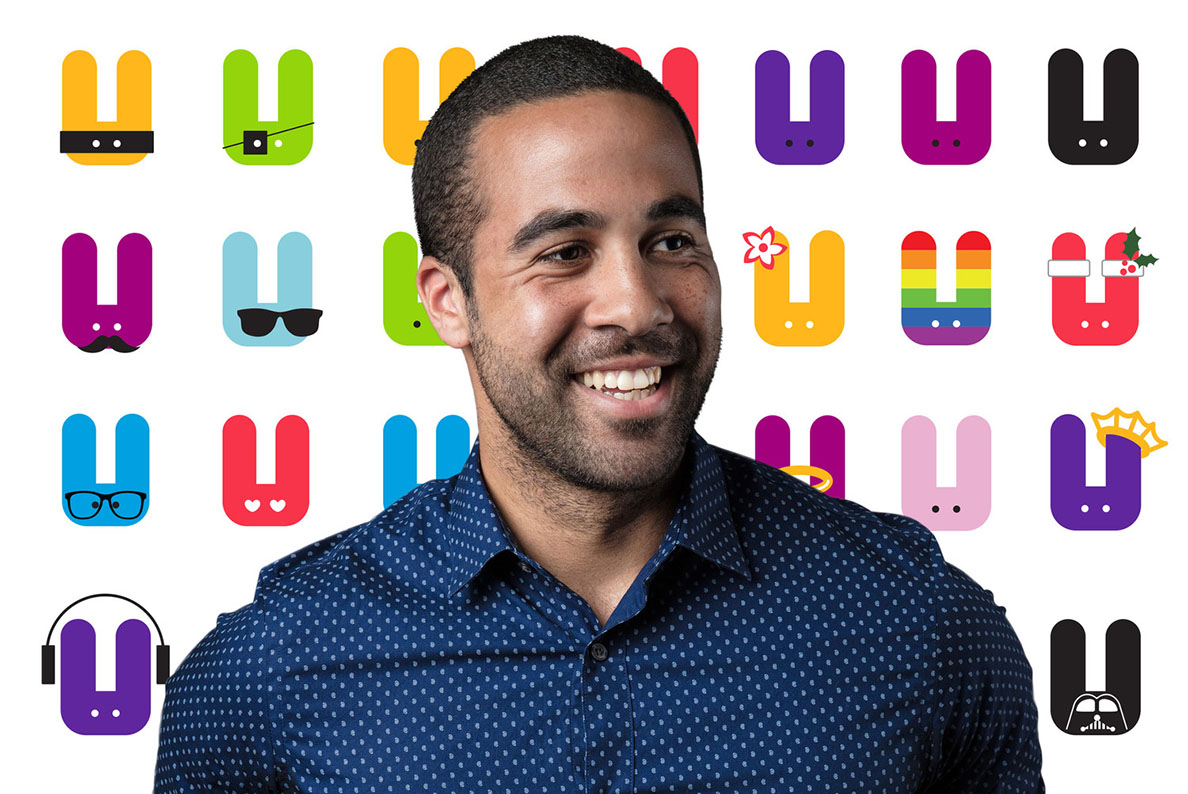
Say Hello to a New Social Network
- BY NATALIE FEULNER
- PHOTOGRAPHY BY GARVIN TSO
- July 9, 2018
Cal State East Bay alumnus Joshua Brown was supposed to play professional baseball. He’d trained for it as a child and teen and dreamed about lacing up a pair of cleats. But as he (and the book “Of Mice and Men”) says “the best-laid plans ... often go awry.”
Instead of pitching in the major leagues, as a young man Brown found himself on the operating table. By the time he graduated high school, his back — unnaturally curved due to severe scoliosis — was fused by 28 screws and two vertical rods. He wore a back brace all day, every day and missed out on the last two years of high school. Baseball and many other high impact sports were no longer a possibility.
“I am an athlete ... but I could no longer do that, so I went through this period of trying to figure out ‘who am I?’” Brown said.
“I realized that even though my peers worked together in the classroom, the minute it was over, people just scattered.”
But now, a few years later, Brown is pursuing a new dream. He is a young entrepreneur and social media innovator, currently beta testing his first app called OpenCrcle, inspired by the loneliness he keenly remembers feeling in high school and college.
“I’d been told my whole life that this one thing is what I’m good for so I’d put all my eggs in one basket,” he said. “But I’ve come to realize that life is about pivoting. Everybody has a plan, but 99 percent of the time it doesn’t go the way you want it to.”
INSPIRED BY ISOLATION
After his many surgeries, Brown started college in 2014. But it wasn’t long before he realized the isolation he felt in high school as a student homeschooled for medical reasons, was still present even on a college campus.
“I was sitting in economics class one day, and I realized that even though my peers worked together in the classroom, the minute it was over, people just scattered,” Brown said. “I just had this realization that people didn’t need to engage, everything they needed was right in their phones. It’s more convenient and safer to have relationships through a device.”
The realization got Brown thinking.
What if you could combat his generations’ addiction to social media, with social media?
“It was important to me that we tap into the student's phone because that’s the way we are already communicating," Brown said.
“Making a company is all about problem-solving, changing the pitch or catering to different needs, it’s awesome.”
With the help of his longtime friend and computer scientist Ryan Wise and graphic designer Cindy Fong, Brown began building OpenCrcle, a social media platform focused on putting “social” back in social media.
CREATING WORLDWIDE CONNECTIONS
When users log in to OpenCrcle (no i "because it's all about 'we' now”), the interface of the app is a map of the world.
Brown says it’s what developers call a “hybrid social media,” involving the sharing of videos, photos and text, but with the additional option and encouragement of getting together in person. And without already needing to be “friends” or somehow connected online already.
For example, if you’re a Cal State East Bay student living in Livermore and enjoy soccer, you may share a photo of yourself playing soccer alone at a local school. Someone else living in the same proximity could find your image using the searchable map interface and the two of you — without previously knowing one another — could start a pickup game.
“Right now I have no clue who attends Cal State East Bay [and lives] around me,” Brown said. “We wanted to create something that not only reached students at CSUEB but allowed them to meet in person because once you leave school, you’re not likely interacting with the university or anyone who goes there any longer.”
OPENING THE CIRCLE
Over the past six months, Brown and the team have met with universities all over California to pitch OpenCrcle as a way to engage students in university life and with one another. The app is currently live and being tested by 130 users, fine-tuned and de-bugged. In the meantime, Brown is meeting with decision- makers such as provosts and IT departments.
Whereas most social media applications on the market such as Facebook and Instagram use advertisements to generate revenue, Brown and the team instead want to monetize the product, similar to BaySync, a platform already in place at Cal State East Bay.
But even if OpenCrcle doesn’t gain as much notoriety Facebook, or even close, Brown says he’s still happy with the experience and what he’s learned.
“Making a company is all about problem-solving, changing the pitch or catering to different needs, it’s awesome,” he said. “Throughout my life, I never heard ‘hey Joshua, you have great ideas and may be the founder of something someday … but you know, I’ve made it for myself, and it’s been a lot of fun.”